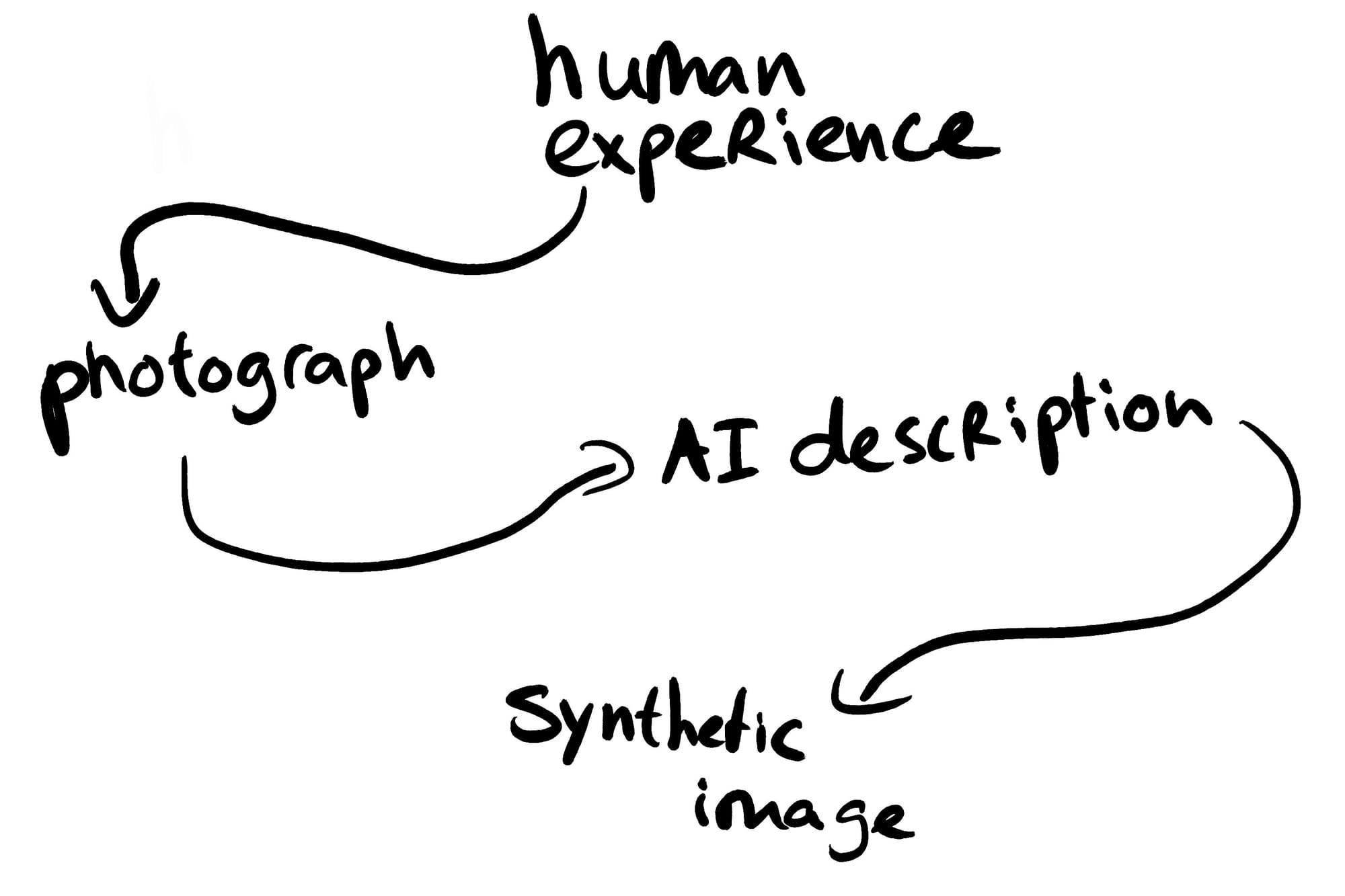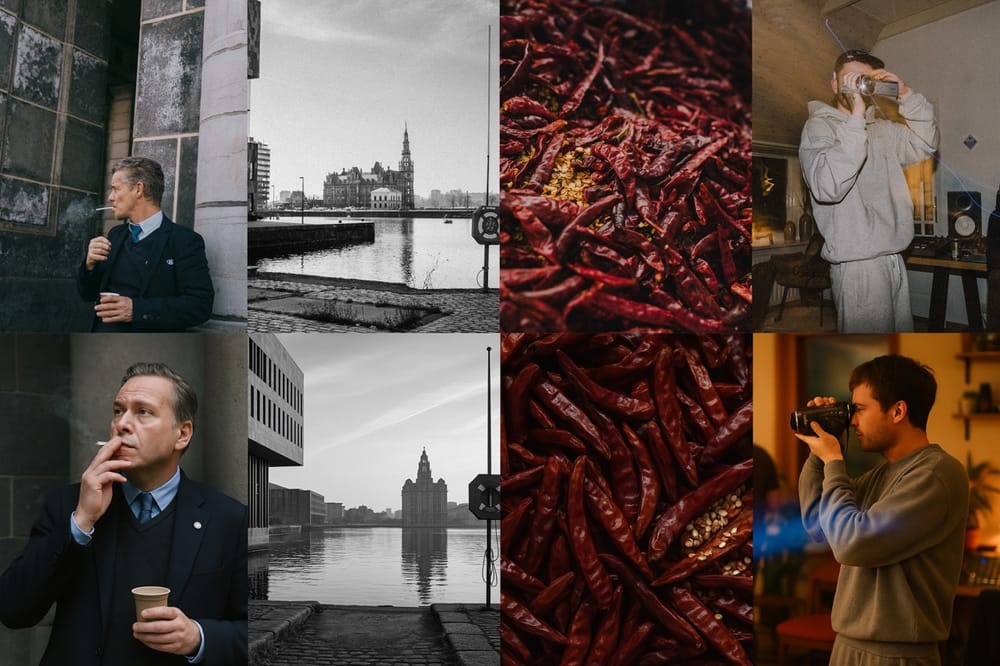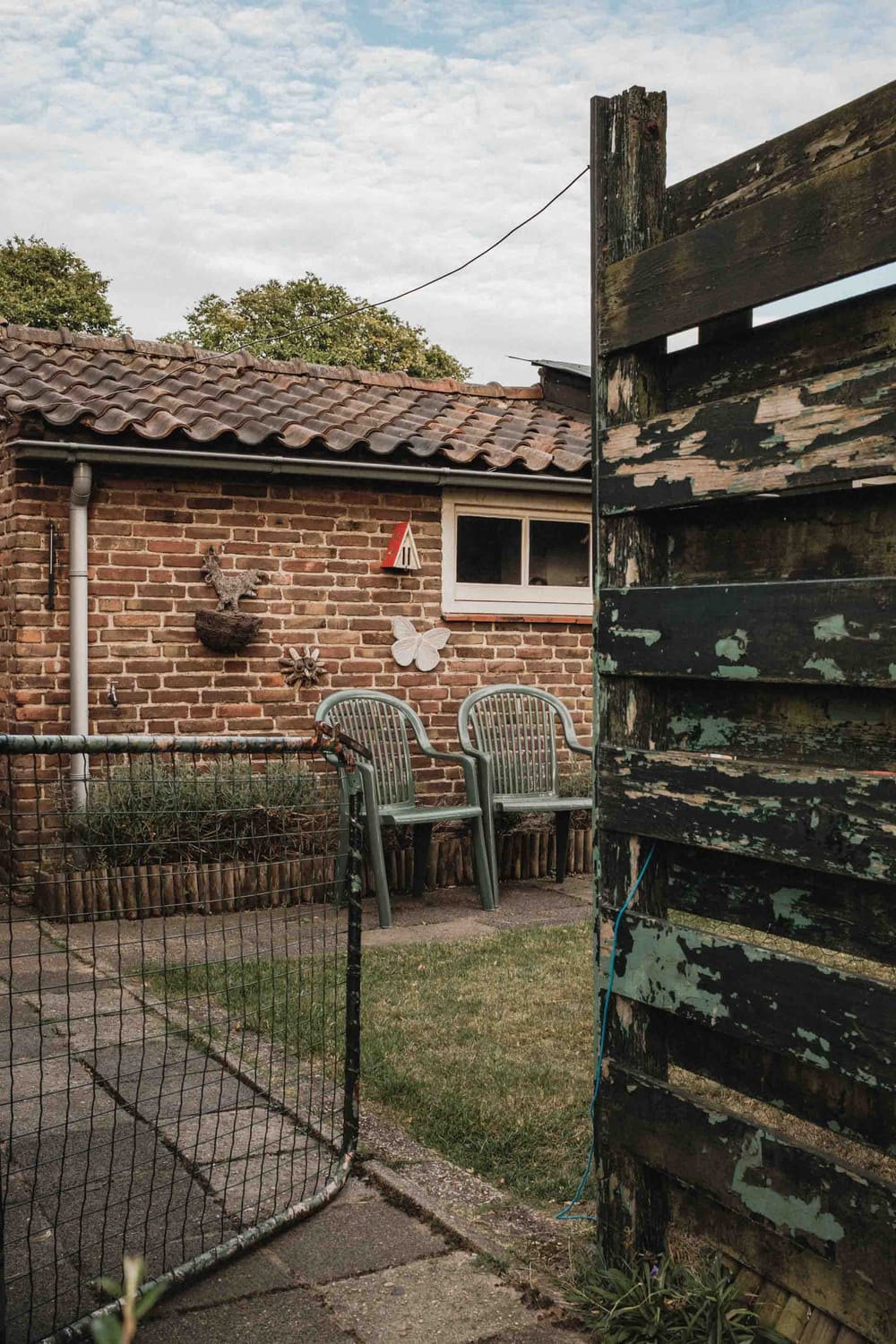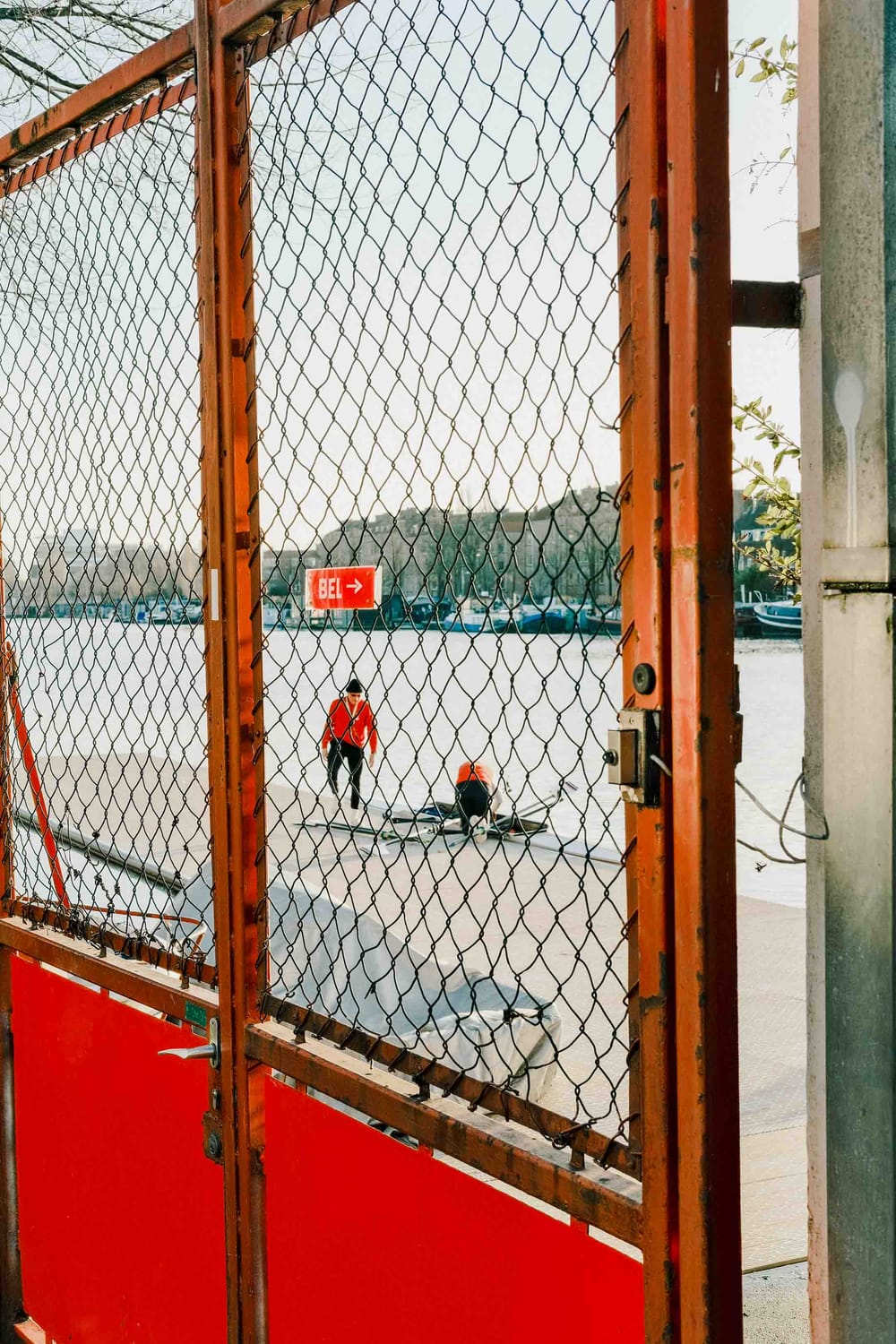Raise your hand if you have used AI in some shape or form in the past few years. Good, you can lower them again, thanks. To those that didn't raise their hands: you're in for a ride. Also, what the heck?
It was the release of DALL·E in January 2021, and subsequently ChatGPT in November 2022, that recalibrated the world we live in. It's the biggest change since the internet—which was the biggest change since the industrial revolution. These might seem overstatements to some (and the verdict is still out) but it's undeniable that artificial intelligence has very quickly, and very prominently, become a part of our every-day discourse. That's not to be underestimated. And we will investigate that impact together.
After three years of running my monthly newsletter Dialogue, I’m looking for a more frequent form of expression. Dialogue is centered around my general thoughts on, and recent experiences with, photography, walking, and exploration of life. It's my most personal outlet. This means some entries can become quite long and a little unfocussed at times. That's just the way I think and I'm leaning on other people finding recognition in the chaos and their understanding that those write-ups are my way of bringing structure to that madness. But can see why it can be too much for people.
That's why I am launching a weekly newsletter. It's called Closer and it will be much shorter, easier to digest, more focussed, and more frequent. Dialogue will continue, but Closer will have a different kind of rhythm—a weekly visual experiment, delivered every Wednesday, with AI as a major component.
Note: existing members won't be able to see the embedded form below so they can opt in via their account pages.
The What, Why and How of Closer
Here's the outline: Every week, I’ll take one of my photographs. I’ll ask ChatGPT, the default AI most people use, to describe what it sees in that image. Then I’ll use that description to generate a new image using AI. No tweaks. One try.
Human experience → photograph → AI description → synthetic image
Some ground rules
- One image per week. It doesn't matter which image it but it has to be one I have taken. In real life, with a real camera, using my real human experiences.
- The newest default version of ChatGPT (the one most people use) will analyze that image and generate a detailed description.
- The prompt to get the description will be included for transparency.
- The prompt to generate the images based on that description will be included too.
- AI will get one try to describe the original image and one try to generate an image. Anybody can endlessly tinker and guide what is does, but that will dilute the results.

The goal is to investigate the differences between human and AI generated images. We can probably agree that AI currently is capable of producing relatively nice images out of the box, but it's not able to replicate human emotion and observation. Though, perhaps as the newsletter progresses over time, the gap becomes increasingly smaller and smaller. Seeing how quickly AI-generated images have improved these past few years makes me wish I started this idea a couple of years ago.
After each weekly experiment, I’ll briefly share my thoughts on the results; AI in its current state, if you will, the impact it has on my work, and how that impact can/might/will change as AI becomes increasingly better. I guess you could say we're looking both closer at my human work and its relevance, as well as seeing how AI is getting closer and closer to mimicking that.
The bigger picture
There's two big things in modern life that put photography at risk: everybody has a camera in their smartphones, and AI. That everybody has a camera might make photography more prevalent, but it also commodifies it. It's value decreased by its accessibility—at least on the surface.
I am personally not worried about this, because images are not made by cameras, they are made by people. People who dedicate a lot of time and resources into learning to see the world a certain way. The camera only captures what we see. That everybody now at least has the tools to do that is great. It pushes the art forward and keeps the ones that are dedicated to it (raises hand), sharper and more focussed then we would've been when simply owning a camera already set you apart. My hypothesis being that AI is the same process, just more pronounced. But does it really?
Now that AI is an ever-present force in our lives, photography is fighting harder than ever for its right to exist. Some forms of photography — especially the commercial industries surrounding them — are probably on a timer. Stock and product photography come to mind first. Especially the kind that lacks character or depth beyond simply showing what something looks like. A simple smartphone image, accompanied by clever prompting can fill many webshops with images that are more than "good enough." No need to hire a professional when the customer can’t tell — or doesn’t care about — the difference. A base-level of quality has been achieved by AI, and there’s nothing you can do about that.
The human nature of photography
With that in mind, I would argue that photography is no longer about creating an image as the final outcome but about the idea of what human concept and experience that image represents. We'll have to find ways to continue evolving our art in ways that bring it closer to what we are as species: imperfect, physical beings, with feelings and emotions, looking for connection.
Photography will have to find a way to prove its authenticity in some way to make verifiable this recording of human experiences, possibly through supplying additional context in the form of 'proof of builts'. Rich EXIF data, with proprietary GPS recordings added to it, further supported by initiatives like Adobe's Content Credentials, are seemingly ways to achieve this. Although I can see AI mimicking that over time, too.
What will never change though, is the stories us humans will tell surrounding those images. The physical act of going to a place, laying your eyes on a subject, feeling the elements around you, the wind, the rain, the sun, positioning those and your subjects in ways only achievable by moving your body through physical space, waiting, puzzling, raising the camera to your eye, and then making that photograph, cannot be replicated by AI. Sure, the end results might seem similar, or perhaps even indistinguishable in a couple of years, but AI will always have to mimic what has been done by us before. Somebody has to go out and do the work, before somebody can learn from it, steal it, and present it as its own.
I am writing those last few sentences with the confidence of one omniscient but I am also aware that's mostly wishful thinking. We can't know right now, we won't be able to stop it, and perhaps should just embrace it for it will make our lives easier and, dare I say it, better. With Closer, I want to keep tabs on, be critical of, and learn about the progress of AI within the field that I operate. The art I hold so closely to my heart: soon to be forgotten, or promoted to prominence for its inherent human nature?
Subscribe now
If you are curious about the impact too, join me in my weekly experiments. Fellow photographers, writers, artists, everybody: you are welcome. Closer is free, arrives every Wednesday, carrying with it one image I created, the closest approximation AI can give it, and my thoughts on how well it's doing. Perhaps over time, we'll get a better sense of where this strange journey is headed.
Note: existing members won't be able to see the embedded form below so they can opt in via their account pages.
Please let me know if you have questions, suggestions or remarks about my approach as I try to be as transparant about it as I can. Together we can experiment and figure out our relationships between what's inside us and the unstoppable forces around. This is just as much a journey for me as it is for you.
See you on Wednesday.
Mitch







